QSI Integrity Management System®
Your Ultimate Management System Solution
QSI brings a powerful, all-in-one management system solution for your business.
At QSI, we understand the importance of having software you can trust. That’s why we built a quality management solution that’s intuitive, easy to use, and customizable to your operations. Our Integrity Management System® (IMS®) is designed to handle the intricacies of your process on the backend, while presenting a straightforward user interface you can use and understand. With more than 30 years of experience in management systems, we have helped countless companies like yours achieve and maintain compliance with ease and confidence.
A Dynamic Management System Solution
With our IMS®, you get the best of both worlds – a tried and trusted software solution that’s always evolving and keeping pace with industry updates. We don’t rest when it comes to streamlining your conformity to regulatory body requirements such as API, ISO, SAE, and more.
IMS provides access to a wide range of advanced features and applications that enable you to fulfill your daily operational needs, maintain compliance, and achieve maximum efficiency, all through one powerful, easy-to-use platform. Store your company’s documentation, track and mitigate risks, manage corrective and preventative actions, notify users of actions, generate reports, and more. Dashboards provide a glance at opportunities for improvement among other various management solutions across all departments.
How does your system stack up?
Management System Musts
In order to be effective, a system should ensure competent management of business processes by capturing lessons learned so problems aren’t repeated, identifying areas for improvement, improving processes, and achieving financial gains through efficiency.
- Demonstrates accountability and responsibility to stakeholders, personnel, and statutory and regulatory bodies
- Readily accessible to maximize information use
- Current to ensure outdated requirements are not accessed
- In a format that is easily understood to reduce the potential for errors
- Maintained to keep information consistent throughout the organization
Accessibility
- Access from anywhere with an internet connection, allowing users to work remotely while fostering business and team collaboration.
- Application-based permission policy that ensures only authorized personnel can view or edit application data.
Data Security
- Web servers hosted in a secure SSAE 18 SOC-1 facility compliant to standards such as ISO 22301, Societal Security, Business Continuity Management Systems and ISO 27001, Information Technology, Security Techniques, Information Security Management Systems (requirements).
- Routine local and offsite backups to restore data in case of emergency thanks to.
- Automatic feature and security updates.
Scalability
- Ability to scale up or down to meet changing business needs, such as adding or removing users or upgrading features.
- Servers optimized to handle more users and requests simultaneously, which means fewer slow-loading times or system crashes.
- Additional hardware and infrastructure upgrades managed by QSI, saving you time and money.
Application Functionality
Document and Records Management
- Simplify the way your company stores, accesses, and shares management system documents and records.
- Take advantage of grouping features that provide the ability to combine information from multiple industries, management system standards, and best practices into a single document hierarchy.
- Effectively manage documents and records throughout their entire lifecycle, from creation to disposal and associated responsibilities.
Vendor Management
- Streamline relationships with external vendors, suppliers, and contractors.
- Track vendor performance and confirm consistent quality of goods or services.
- Document internal vendor activities such as audits and inspections to ensure quality control and compliance.
Change Management
- Manage corrective actions, preventive actions, audit deficiency reports, and customer complaint reports.
- Control the identification and disposition of product nonconformities.
- Rely on a comprehensive risk management framework to anticipate, manage, and respond to potential risks and ensure business continuity.
- Identify potential risks and assess their likelihood and impact.
- Facilitate and manage changes to company processes, systems, policies, and procedures, and ensure changes are properly documented, tested, and approved before implemented.
- Identify potential disruptions and develop strategies to minimize impact on your company to ensure business continuity and quick response.
Organizational Management
- Streamline personnel identification, management, training, and qualification processes, making workforce documentation easy.
- Manage personnel records, including locations, job titles, departments, and more.
- Create, manage, and track training programs to ensure employees have the necessary skills and knowledge to perform their jobs effectively.
- Manage employee onboarding, such as training, certifications, and licenses, ensuring new hires meet job title qualification requirements.
Planning and Scheduling Management
- Ensure that equipment and facilities operate at peak performance levels, leading to improved efficiency and productivity.
- Schedule and track routine maintenance tasks such as inspections, repairs, and replacements to avoid costly downtime and ensure equipment operates safely and efficiently.
- Maintain equipment and instrument accuracy and precision by ensuring proper calibration and adjustments to meet specific performance standards, as well as proper calibration record documentation and maintenance.
- Effectively plan for routine management system activities, such as audits, reviews, and data analysis.
- Identify and track key business metrics, key performance indicators, and customer surveys.
- Understand performance, identify areas for improvement, and make data-driven decisions.
- Track trends, forecast future performance, and make informed decisions about investments and growth opportunities.
- Identify areas for improvement, set goals and benchmarks, and monitor progress over time.
- Gather insights into customer satisfaction, preferences, and behavior to improve customer loyalty, retention, and overall business performance.
Software Development
Blurb about this product/service that is regulated in length to approx three to five lines of text. Meant to promote interest and allow user navigate laterally within this content subject


